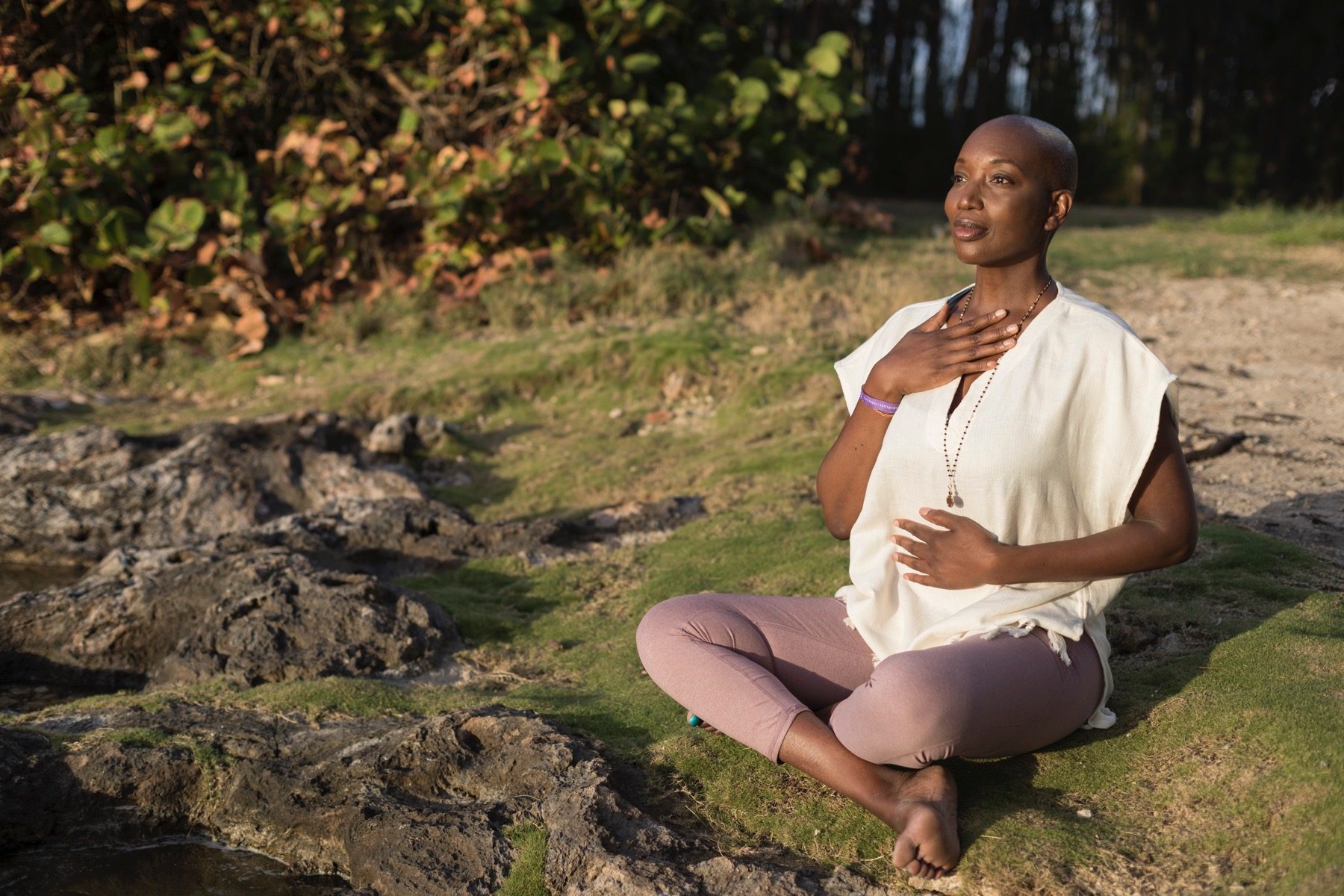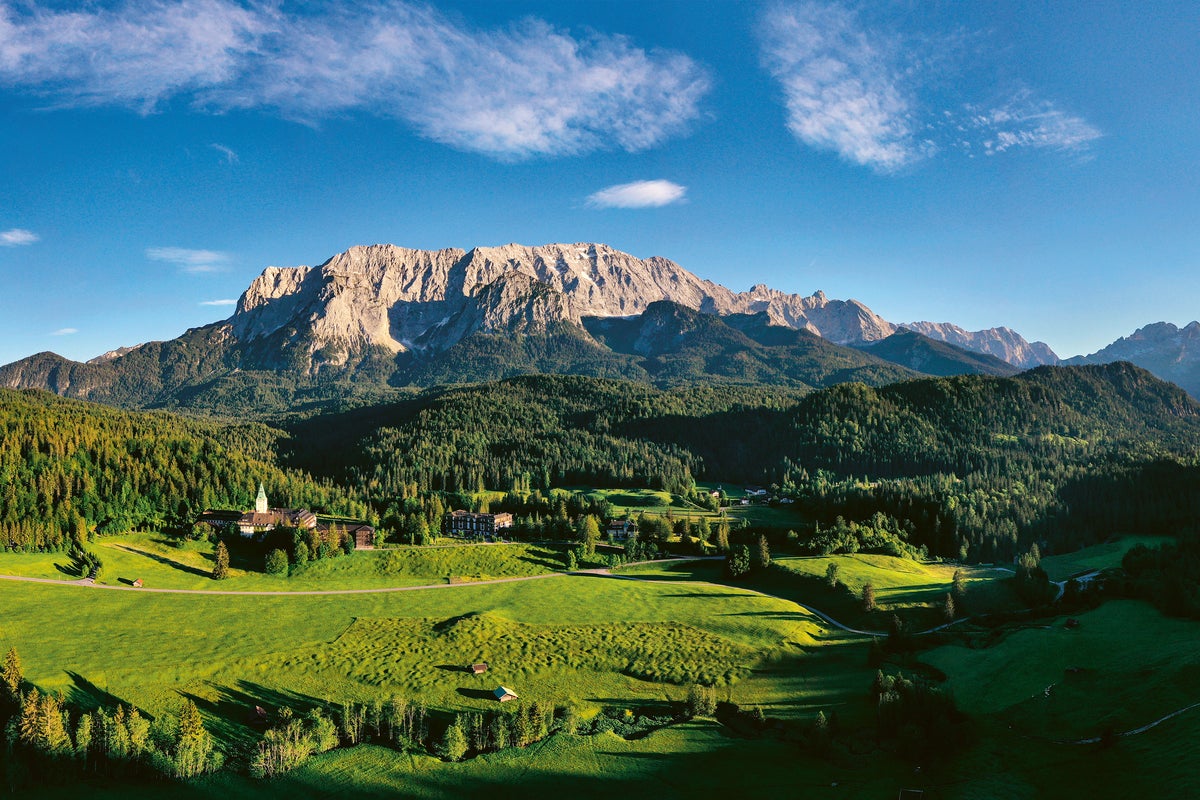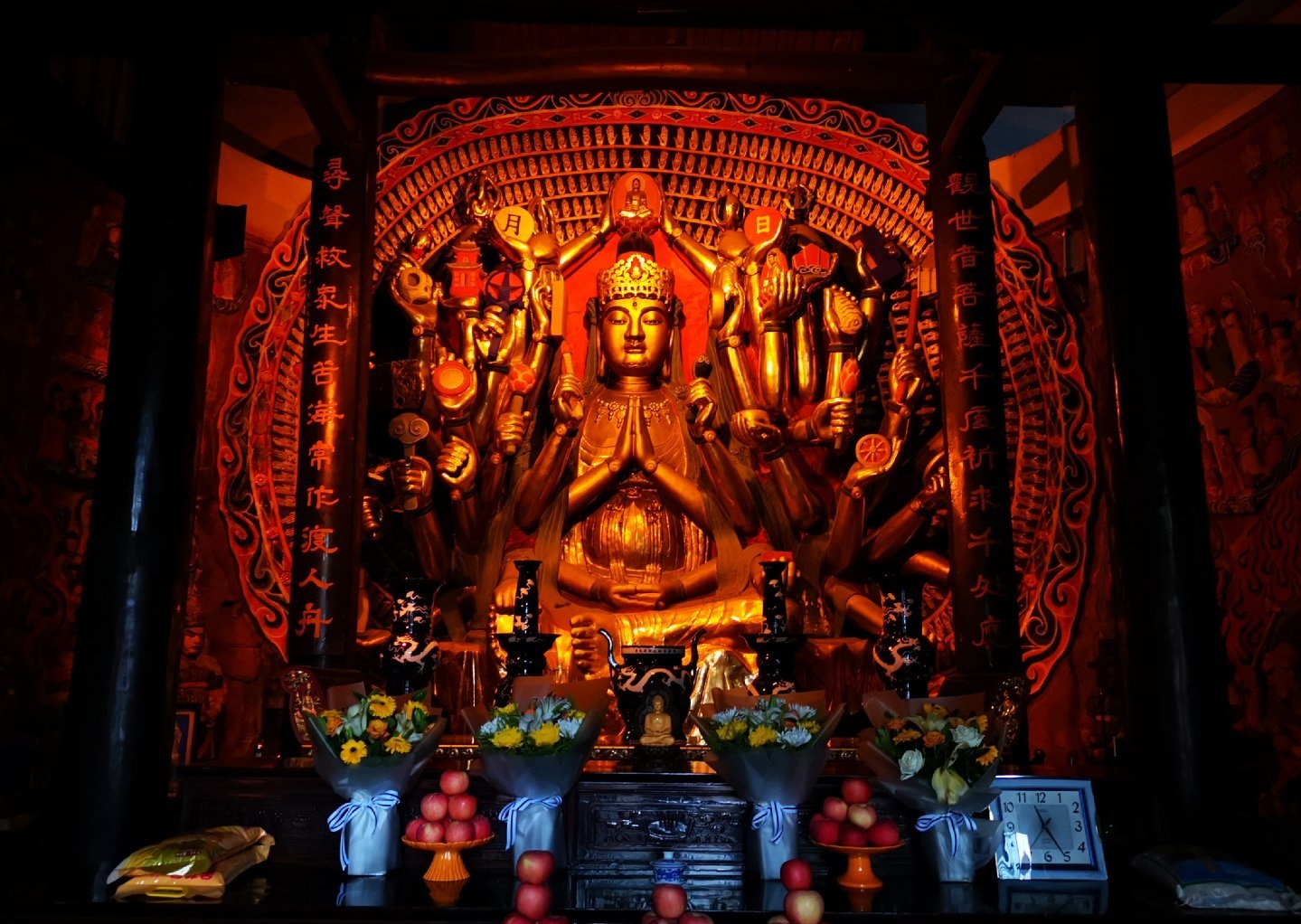Three Principal Paths — the peerless path of Renunciation, Bodhichitta, Shunyata
The peerless teaching in Mahayana Buddhism is collectively known as the Three Principal Paths. These three are Renunciation, Bodhichitta and Shunyata. Together, they represent the most important teachings. Inevitably, all teachings begin — and later reinforce over-and over —...

The peerless teaching in Mahayana Buddhism is collectively known as the Three Principal Paths. These three are Renunciation, Bodhichitta and Shunyata. Together, they represent the most important teachings. Inevitably, all teachings begin — and later reinforce over-and over — these vital teachings of the Buddha. Today, many of these teachings are available on Zoom and online (see event below and embedded video.)
Don’t miss a special teaching event (Zoom and live in Toronto) on the Three Principal Paths with Venerable Zasep Tulku Rinpoche on Tuesday, 6 Dec 2022 7:00 PM – 9:00 PM. For information and to reserve a spot, see this link for tickets>>
To see previous teaching (a Buddha Weekly short video) on Three Principle Paths with Venerable Zasep Rinpoche, see the embedded video below.
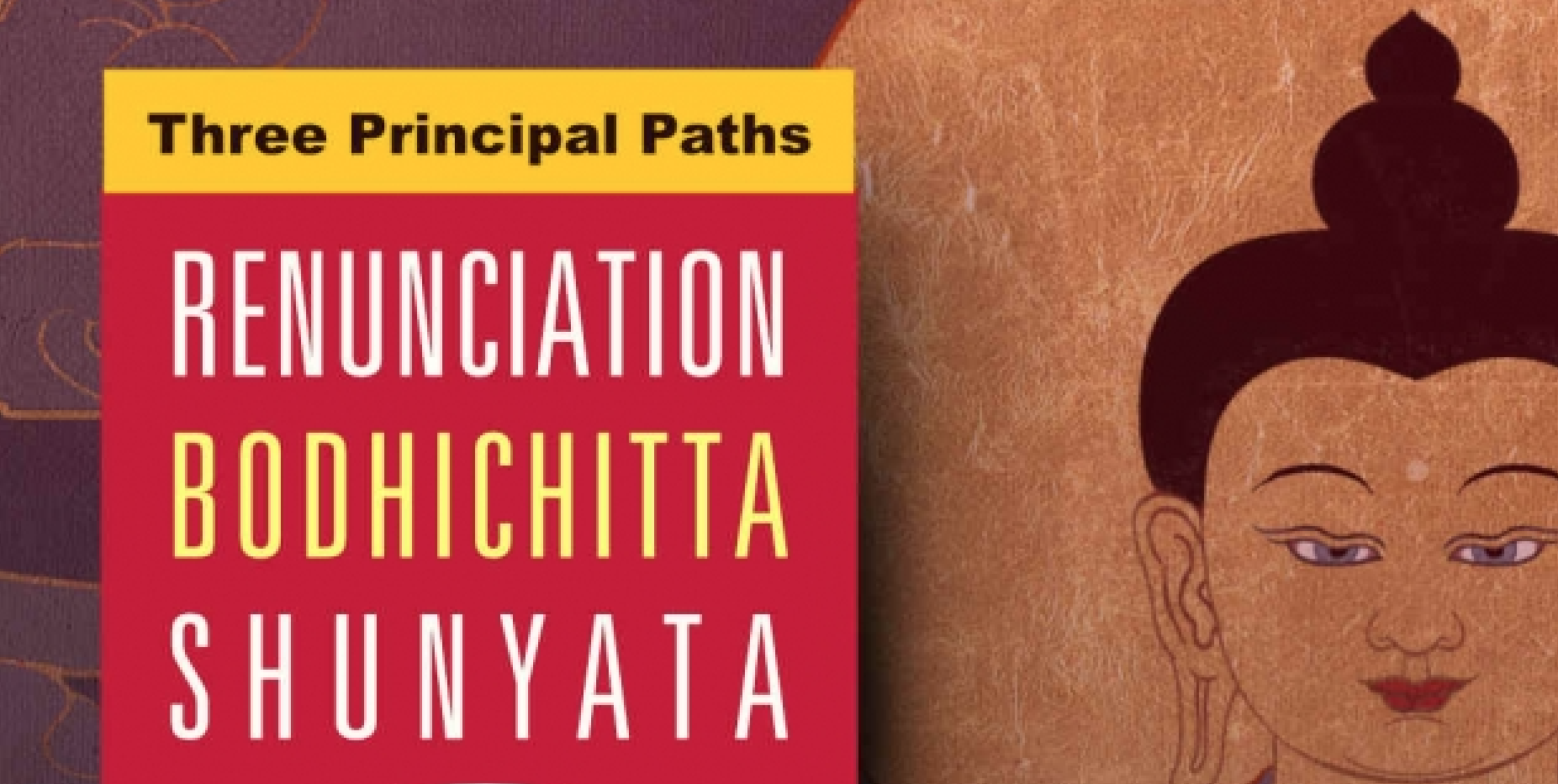
Lama Tsongkhapa was one of the greatest of philosophers, writers, and teachers from the Land of Snows. He wrote over 10,000 pages of commentary and instruction on Buddha’s teachings. This vast library of writings on Lamrim and the Three Principal Paths — as well as many advanced practices — are historical and revered. Yet, though he wrote copious, annotated, and rigorous texts — still relied upon today — Lama Tsongkhapa also wrote short “gist” poems or songs, that contained the essence of the entire teaching. One of the best known is the 14-verses on the Three Principle Paths (in English, in full, below.)
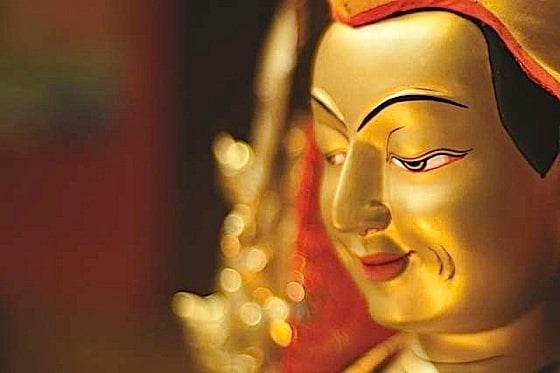 The great sage Lama Je Tsong Khapa.
The great sage Lama Je Tsong Khapa.
Among the most wonderful of these was a lyrical “poem” that distilled the Three Principal Paths — Renunciation, Bodhichitta and Shunyata, the essence of all of Shakyamuni’s teachings — into fourteen four-line stanzas. When you consider how many sutras there are, this is a stunning feat. It is also a wonderful daily recitation reinforcing the three core principles of:
Renunciation — the determination to be free Bodhichitta — the determination to help others be free Shunyata — the perfect view, the real antidote of “correct view of Emptiness.”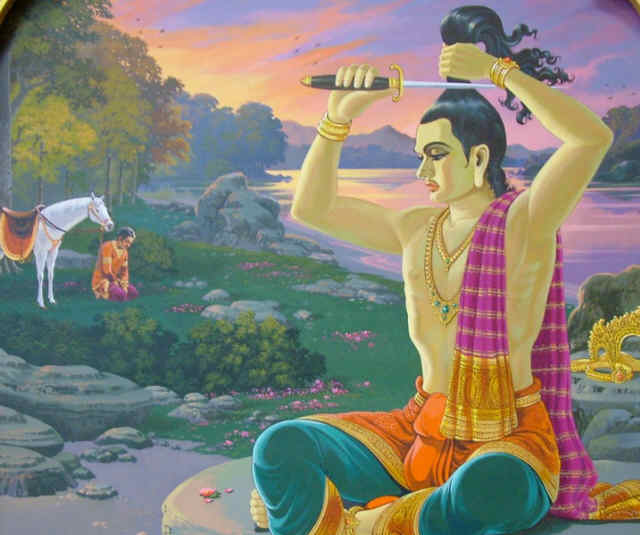 Buddha renounced ordinary life when he left his secure life in the palace. Symbolic of his renunciation, he cut his beautiful hair. Renunciation isn’t specifically pointing to renunciation as a monk, however. It’s about the commitment to journey the path, here and now, to Enlightenment. This road can be journeyed as a monk or a lay practitioner.
Buddha renounced ordinary life when he left his secure life in the palace. Symbolic of his renunciation, he cut his beautiful hair. Renunciation isn’t specifically pointing to renunciation as a monk, however. It’s about the commitment to journey the path, here and now, to Enlightenment. This road can be journeyed as a monk or a lay practitioner.
Principals or Principles?
Let’s put this aside first. Depending on translation, this is translated as The Three Principal Paths (plural paths), or as the Three Principles of the Path (singlular path). So, both Principles and Principal are correct spellings depending on context. In one case Principal refers to Path; in the other Principles refers to the constituent principles of the path. In one case, “three paths” in the other “one path with three principles.” Regardless of translation, the gist is the same — the path (or paths) to Enlightenment are fully contained within Lama Tsongkhapa’s instructions, which summarize fully the teachings of the Buddha.
A short teaching from Venerable Zasep Tulku Rinpoche on the Three Principal Paths:
Three Principles
As the language implies, the principles are our wisdom guideposts: Renunciation, Bodhichitta, and Shunyata. Each of these requires more than understanding and comprehension. There must be “actions” as well: meditation, generosity to others, Pujas for the benefit of all beings, offerings to the Sangha, more meditation, and receiving instructions from qualified teachers.
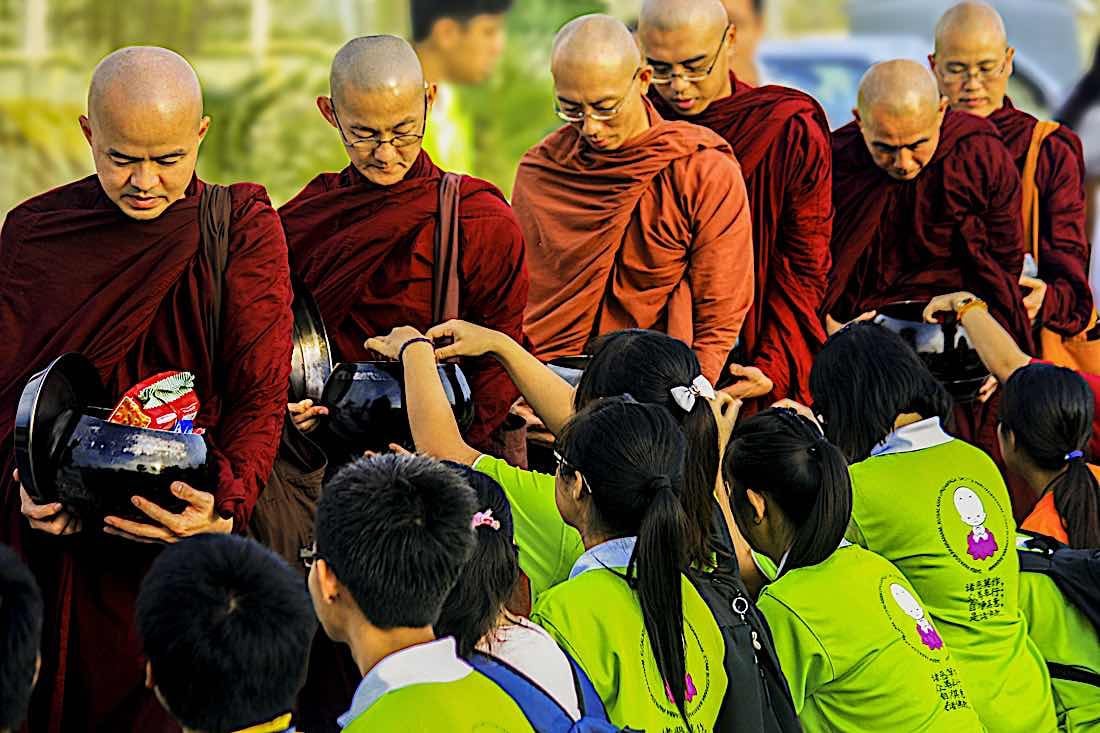 Youth give “dana” to monastic Sangha. This is one form of Bodhichitta. Bodhichitta includes all of your efforts at altruism, not just for the Sangha and your friends — but for all sentient beings.
Youth give “dana” to monastic Sangha. This is one form of Bodhichitta. Bodhichitta includes all of your efforts at altruism, not just for the Sangha and your friends — but for all sentient beings.Gelek Rimpoche explained it this way:
“Determination to be free, renunciation, seeking freedom or developing love for yourself. There are different translations for this. The word in Tibetan is, ‘ngen- jung.’ ‘Nge-par,’ means definite; ‘jung-wa,’ means definitely obtaining. So some call it, “determination to be free,” or “seeking freedom,” which seems to me a better translation than “renunciation,” which is how others translate it. So the first point is building up the resolution, “Definitely I would like to be free.” That is the first principle.
When you say, “Definitely I would like to be free,” everybody will agree right away. Nobody wants to be a slave; everybody wants to be free. But simply saying that will not help. You have to get into it deeply: free from what? For what?
First, you have to see: free from what? All the points dealing with the nature of life and so forth fall into the category of the ‘determination to be free.’ The purpose here is to build a desire and a proper intention to really determine to free oneself. For that, we need to have the proper motivation. You can say, “I already have the proper motivation, I’d like to be free.” That is not right; proper motivation for a determination to be free requires really seeing the faults on the one side and the qualities on the other side, and balancing them within you. Then you judge, you make up your mind without anybody’s pressure and without depending on your intuition. Properly seeing the facts, you balance them and make your decision and go in the direction you choose. That is what it really is. To develop this needs time, labor, meditation, information, all of these. That is the first principle.
2. Altruism. The second principle is to realize that it is not enough that I should free myself alone. What about others, my nearest and dearest, the persons that I care about most, what about all of them? Do I walk away from them, saying that I found some way out for myself and I don’t care about them? Do I say, “Bye, bye!” and walk away? Or do I care about them and love them and do something? That is the second question. So love- compassion and the ultimate altruistic attitude, or bodhi- mind, is built up in the second principle.
3. Perfect view. The determination to be free alone is not enough. Love-compassion is not enough. We need the real antidote, the meditation on true understanding or wisdom, what we call perfect view: how to look into total reality without influence of the dualistic mind or delusion. Totally free from delusion, free from dualistic influence looking into the nature of reality as nakedly as possible; that is what we call perfect view. That is the third path.”
The activity that arises from the Three Principal Paths (or Three Principles of the Path) require activities. As Gelek Rimpoche explained:
“Now the question rises of what to do with these Three Principles? You have to meditate on them and practice them. This will bring your spiritual level up; it takes you onto the path. And if your vehicle is good, you reach there very fast; if your vehicle is medium you go normally, and if you vehicle is bad you go so-so, but you go. That’s what it is.”
Three Principal Paths
I bow to all the high and holy lamas.
1. As far as I am able I will explain
The essence of all high teachings of the Victors,
The path that their holy sons commend,
The entry point for the fortunate seeking freedom.
2 . Listen with a pure mind, fortunate ones
Who have no craving for the pleasures of life,
And who to make leisure and fortune meaningful strive
To turn their minds to the path which pleases the Victors.
3 . Without pure renunciation, there is no way to end
This striving for pleasant results in the ocean of life.
It is because of their hankering life as well that beings
Are fettered, so seek renunciation first.
4. Leisure and fortune are hard to find,life is not long;
Think it constantly, stop desire for this life.
Think over and over how deeds and their fruits never fail,
And the cycle’s suffering: stop desire for the future.
5 .When you have meditated thus and feel not even
A moment’s wish for the good things of cyclic life,
And when you begin to think both night and day
Of achieving freedom, you have found renunciation.
6 .Renunciation though can never bring
The total bliss of matchless Buddhahood
Unless it is bound by the purest wish [bodhichitta]; and so,
The wise seek the high wish [bodhichitta] for enlightenment.
7. Those swept along four fierce river currents,
Chained up tight in past deeds, hard to undo,
Stuffed in a steel cage of grasping “self,”
Smothered in the patch-black ignorance.
8. In a limitless round they are born, and in their births
Are tortured by the three sufferings without a break;
Think how your mothers feel, think of what is happening
To them; try to develop this highest wish [bodhichitta].
9. You may master renunciation and the wish [bodhichitta],
But unless you have the wisdom perceiving reality
You cannot cut the root of cyclic life.
Make efforts in ways then to perceive interdependence.
10. A person has entered the path that pleases the Buddhas
When for all objects, in the cycle or beyond,
He sees that cause and effect can never fail,
And when for him they lose all solid appearance.
11 . You have yet to realize the thought of the Able
As long as two ideas seem to you disparate;
The appearance of things – infallible interdependence
And emptiness – beyond taking any position.
12 . At some point they no longer alternate, come together;
Just seeing that interdependence never fails
Brings realization that destroys how you hold to objects,
And then your analysis with view is complete.
13. In addition, the appearance prevents the existence extreme;
Emptiness that of non-existence, and if
You see how emptiness shows in cause and effect
You will never be stolen off by extreme views.
14. When you have grasped as well as I the essential points
Of each of the three principal paths explained,
Then go into isolation, my son, make mighty
Efforts, and quickly win your ultimate wish.
These instructions were imparted to Ngawang Drakpa, a friar from the Tsako district, by that very learned Buddhist monk, the glorious Lobsang Drakpa (Tsong Khapa, 1357-1419).

 Tfoso
Tfoso 











